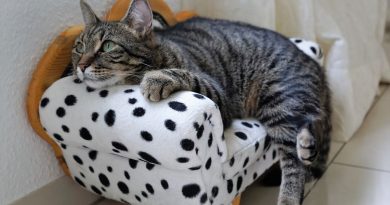Scientists Complete Feline DNA Sequence
Cinnamon is one of several mammals that are currently being analyzed using "light" (two-fold) genome sequence coverage. The similarity between the cat genome and six recently completed mammalian genomes (human, chimpanzee, mouse, rat, dog, and cow) allowed the scientists to identify 20,285 putative genes in the cat genome. The comparison also revealed hundreds of chromosomal rearrangements that occurred among the different lineages of mammals since they diverged from a single ancestor that roamed the earth among the dinosaurs some 100 million years ago.
The work was carried out at the U.S. National Cancer Institute. The project was authorized three years ago by the U.S. National Human Genome Research Institute. Domestic cats have more than 250 naturally occurring hereditary disorders, many of with are similar to genetic problems in humans. For example, Cinnamon’s lineage carries a genetic mutation that causes a degenerative eye disease called retinitis pigmentosa that can cause blindness and affects about 1 in 3500 Americans.
The domestic cat also serves as an excellent model for infectious diseases that affect humans, such as HIV/AIDS, which is a genetic relative of FIV ( feline immunodeficiency virus). Other examples include diabetes, retinal disease and spina bifida. A report detailing the sequencing of the domestic cat genome is published in November’s issue of the journal Genome Research.




